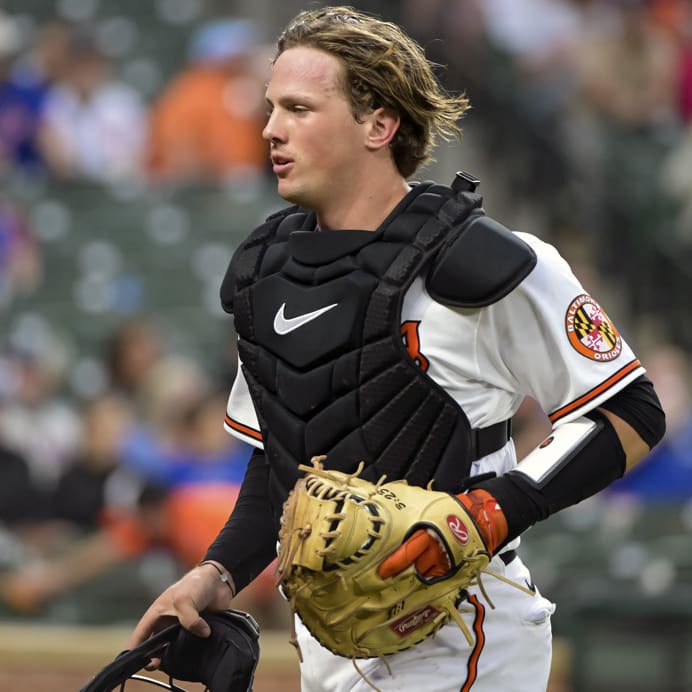This article is part of our MLB Barometer series.
We did see one vaguely significant trade in MLB on Monday, with Carlos Santana moving from Kansas City to Seattle, but trade season in baseball doesn't generally begin in earnest until mid-July. That means that enterprising fantasy players still have a couple of weeks to maneuver.
Real-life trades can significantly alter a player's fantasy value, potentially giving you the boost you need to make up ground in the standings. The problem is that once that trade happens, the change to a player's value is typically fairly obvious. You likely won't be able to swing a fantasy trade that winds up being lopsided in your favor the rest of the way, and you'll face stiff competition on the waiver wire for players whose value suddenly jumped.
That means that the time for profit is now. If you correctly guess that a player's value will change significantly next month but are able to find a trade partner who isn't predicting such a value change, you could greatly improve your chances down the stretch. Similarly, if you can afford to stash a player who's about to have a role opened up for them for a few weeks (e.g., if you'd picked up Vinnie Pasquantino a couple weeks ago), you might be able to save quite a few FAAB dollars.
Here are a few places to look for opportunities to preempt the market:
- Players with expiring contracts on likely sellers. These are the players most likely to get dealt. Whether their values are due
We did see one vaguely significant trade in MLB on Monday, with Carlos Santana moving from Kansas City to Seattle, but trade season in baseball doesn't generally begin in earnest until mid-July. That means that enterprising fantasy players still have a couple of weeks to maneuver.
Real-life trades can significantly alter a player's fantasy value, potentially giving you the boost you need to make up ground in the standings. The problem is that once that trade happens, the change to a player's value is typically fairly obvious. You likely won't be able to swing a fantasy trade that winds up being lopsided in your favor the rest of the way, and you'll face stiff competition on the waiver wire for players whose value suddenly jumped.
That means that the time for profit is now. If you correctly guess that a player's value will change significantly next month but are able to find a trade partner who isn't predicting such a value change, you could greatly improve your chances down the stretch. Similarly, if you can afford to stash a player who's about to have a role opened up for them for a few weeks (e.g., if you'd picked up Vinnie Pasquantino a couple weeks ago), you might be able to save quite a few FAAB dollars.
Here are a few places to look for opportunities to preempt the market:
- Players with expiring contracts on likely sellers. These are the players most likely to get dealt. Whether their values are due to change significantly and in what direction varies heavily player-to-player, however. If they're clearly good enough to start for a contender, you can anticipate an improvement in their odds of picking up wins, runs or RBI, though that could either be offset or enhanced by a change in home park. If they're good enough to start for a bad team but don't look likely to start for a contender, it may be time to try to deal them away before their value collapses.
- Relievers on likely sellers. Every contender could use another reliable high-leverage arm, and a reliever's main value to a rebuilding club is the prospects he'll bring back in a trade. Most contenders already have someone trustworthy to use in the ninth inning, though, which means that most relievers who are currently closing for bad teams are at risk of seeing their value drop. That means that setup men on bad teams could be worth a speculative add, though it's tough to bid too much on them, as they could just as easily be flipped for prospects.
- Fifth starters and fringe regulars on likely buyers. These players generally aren't very good, but simply playing regularly as part of a good team has plenty of value, especially in deeper leagues. These are the spots contenders are trying to upgrade, though, so every one of them is at risk of losing significant playing time.
- The next men up on likely sellers. In other words, the Vinnie Pasquantinos. These players have a good shot at seeing a major uptick in playing time soon. The problem, of course, is that most of them aren't very good by definition (as they're backups on bad teams), with the rare exception of prospects like Pasquantino who are merely waiting for a starting role to open up after a trade. Still, in deep AL-only and NL-only leagues, it might be worth picking up a bench player on a bad team who has an obvious trade candidate ahead of him.
Keep an eye on those categories of players and consider making a move in the next week or two before trade rumors pick up in earnest and the rest of your league-mates change their evaluation of players in similar ways. You could certainly get it wrong if you bet on a trade that doesn't happen, but the upside is big if you guess correctly, so it's a path worth pursuing if you have meaningful ground to make up. For now, we'll move on to a look at 10 players whose values have changed over the past few weeks.
RISERS
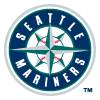 Jesse Winker, OF, Mariners: Winker's renaissance may be briefly interrupted soon by a suspension for his role in inciting a brawl after getting hit by a pitch Sunday against the Angels, but it's been a very encouraging recent run overall for the outfielder. Winker's fantasy value was always going to take a hit this season as he moved from one of the league's best hitters' parks in Cincinnati to one of its best pitchers' parks in Seattle, but the .593 OPS he managed through his first 50 games represented far more than a change in park factors. His 15.5 percent strikeout rate over that stretch matched his mark from the 2021, but his 4.8 percent barrel rate represented a huge step back from his 11.2 percent barrel rate from his final season as a Red. Something clicked in early June, however, and he's now managed a 13.2 percent barrel rate in his last 23 contests, helping him to a .937 OPS. His strikeout rate has actually jumped to 22.7 percent of that stretch, but he's made so much contact throughout his career that he can afford to trade some in for more power.
Jesse Winker, OF, Mariners: Winker's renaissance may be briefly interrupted soon by a suspension for his role in inciting a brawl after getting hit by a pitch Sunday against the Angels, but it's been a very encouraging recent run overall for the outfielder. Winker's fantasy value was always going to take a hit this season as he moved from one of the league's best hitters' parks in Cincinnati to one of its best pitchers' parks in Seattle, but the .593 OPS he managed through his first 50 games represented far more than a change in park factors. His 15.5 percent strikeout rate over that stretch matched his mark from the 2021, but his 4.8 percent barrel rate represented a huge step back from his 11.2 percent barrel rate from his final season as a Red. Something clicked in early June, however, and he's now managed a 13.2 percent barrel rate in his last 23 contests, helping him to a .937 OPS. His strikeout rate has actually jumped to 22.7 percent of that stretch, but he's made so much contact throughout his career that he can afford to trade some in for more power.
 Travis d'Arnaud, C, Atlanta: The emergence of William Contreras this season theoretically threatens d'Arnaud's role as Atlanta's primary catcher, but the veteran is doing everything he can to hold the young backstop off. D'Arnaud has been particularly hot over his last 15 games, homering six times while slashing .323/.382/.694, scoring 15 runs and driving in 17 more. That run brought his wRC+ up to 122, fifth-best out of the 28 catchers with at least 150 plate appearances. His 19.5 percent strikeout rate ranks sixth among that group, while his 9.8 percent barrel rate is solidly above-average. That combination of contact and power is rare to find behind the plate. No catcher who has come to the plate at least 300 times in a season since barrel rates began being tracked in 2015 has finished with a strikeout rate below 20 percent and a barrel rate at least that high. That performance has enabled d'Arnaud to hold onto his role despite Contreras' best efforts, so he should remain one of the best fantasy catcher options for as long as he can remain on the field.
Travis d'Arnaud, C, Atlanta: The emergence of William Contreras this season theoretically threatens d'Arnaud's role as Atlanta's primary catcher, but the veteran is doing everything he can to hold the young backstop off. D'Arnaud has been particularly hot over his last 15 games, homering six times while slashing .323/.382/.694, scoring 15 runs and driving in 17 more. That run brought his wRC+ up to 122, fifth-best out of the 28 catchers with at least 150 plate appearances. His 19.5 percent strikeout rate ranks sixth among that group, while his 9.8 percent barrel rate is solidly above-average. That combination of contact and power is rare to find behind the plate. No catcher who has come to the plate at least 300 times in a season since barrel rates began being tracked in 2015 has finished with a strikeout rate below 20 percent and a barrel rate at least that high. That performance has enabled d'Arnaud to hold onto his role despite Contreras' best efforts, so he should remain one of the best fantasy catcher options for as long as he can remain on the field.
 Isaac Paredes, 2B/3B, Rays: There's abundant evidence at this point that suggests that if the Rays like a player, he's worth paying attention to. Paredes hadn't done much in limited major-league opportunities for the Tigers prior to this season, hitting .215/.290/.302 in 57 games, but he didn't turn 23 until this February and had produced some strong numbers in the minors. Most notably, he had nine more walks than strikeouts in 72 Triple-A games last season, and his 11 homers suggested there could be at least modest power in his bat despite his 0.7 percent barrel rate in the majors to that point. Unsurprisingly, it looks as though the Rays were right to go after him. After grabbing 11 hits and five homers last week, he's now hitting .255/.315/.612 with 10 homers through 108 plate appearances this year, making the case for more regular playing time. He's making tons of contact, striking out just 13.9 percent of the time, and he's paired that with a suddenly above-average 8.3 percent barrel rate. All this has happened while Austin Meadows has yet to homer. Looks like the Rays know what they're doing.
Isaac Paredes, 2B/3B, Rays: There's abundant evidence at this point that suggests that if the Rays like a player, he's worth paying attention to. Paredes hadn't done much in limited major-league opportunities for the Tigers prior to this season, hitting .215/.290/.302 in 57 games, but he didn't turn 23 until this February and had produced some strong numbers in the minors. Most notably, he had nine more walks than strikeouts in 72 Triple-A games last season, and his 11 homers suggested there could be at least modest power in his bat despite his 0.7 percent barrel rate in the majors to that point. Unsurprisingly, it looks as though the Rays were right to go after him. After grabbing 11 hits and five homers last week, he's now hitting .255/.315/.612 with 10 homers through 108 plate appearances this year, making the case for more regular playing time. He's making tons of contact, striking out just 13.9 percent of the time, and he's paired that with a suddenly above-average 8.3 percent barrel rate. All this has happened while Austin Meadows has yet to homer. Looks like the Rays know what they're doing.
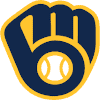 Andrew McCutchen, OF, Brewers: I strongly considered writing McCutchen up as a faller a few weeks ago alongside fellow aging outfielder and then-teammate Lorenzo Cain. McCutchen owned a .551 OPS as late as June 4, but while the Brewers would cut ties with Cain in mid-June, they kept faith in McCutchen and have been rewarded with a strong few weeks. Since June 5, the 35-year-old outfielder has hit .353/.450/.529. His turnaround is primarily attributable to the fact that he's suddenly making far more contact, as he struck out 23.3 percent of the time over his cold streak but cut that mark to just 11.3 percent over his hot stretch, a number that comes in below his 12.5 percent walk rate. The quality of his contact has also improved slightly, with his barrel rate jumping from 7.1 percent to 8.5 percent. We're still talking about a player at the tail end of his career here, but McCutchen was a slightly above-average hitter in each of the last two seasons, and it looks like he should be able to perform at least at that level the rest of the way.
Andrew McCutchen, OF, Brewers: I strongly considered writing McCutchen up as a faller a few weeks ago alongside fellow aging outfielder and then-teammate Lorenzo Cain. McCutchen owned a .551 OPS as late as June 4, but while the Brewers would cut ties with Cain in mid-June, they kept faith in McCutchen and have been rewarded with a strong few weeks. Since June 5, the 35-year-old outfielder has hit .353/.450/.529. His turnaround is primarily attributable to the fact that he's suddenly making far more contact, as he struck out 23.3 percent of the time over his cold streak but cut that mark to just 11.3 percent over his hot stretch, a number that comes in below his 12.5 percent walk rate. The quality of his contact has also improved slightly, with his barrel rate jumping from 7.1 percent to 8.5 percent. We're still talking about a player at the tail end of his career here, but McCutchen was a slightly above-average hitter in each of the last two seasons, and it looks like he should be able to perform at least at that level the rest of the way.
 Ross Stripling, SP, Blue Jays: Stripling has been the quintessential swingman throughout his seven major-league seasons, starting 89 games while appearing in relief 100 times. He didn't open the season in the Blue Jays' rotation, so there was little reason to be interested in him at the start of the year, but he's seemingly locked into a starting role for the rest of the campaign with Hyun Jin Ryu shut down for Tommy John surgery and Nate Pearson (lat) dealing with yet another injury. Since returning to the rotation in early June, Stripling owns a 1.31 ERA and 0.73 WHIP in four starts. That comes with some good fortune in the form of a .211 BABIP and 80.0 percent strand rate, but there's plenty to like here nonetheless. His 18.9 percent strikeout rate in that run is unimpressive, but his 4.1 percent walk rate is excellent and his 50.9 percent ground-ball rate is solidly above-average. Don't expect the 32-year-old to keep his ERA down at 3.08 for the rest of the year, but he's a viable option to fill out your rotation especially as he's backed by a strong lineup.
Ross Stripling, SP, Blue Jays: Stripling has been the quintessential swingman throughout his seven major-league seasons, starting 89 games while appearing in relief 100 times. He didn't open the season in the Blue Jays' rotation, so there was little reason to be interested in him at the start of the year, but he's seemingly locked into a starting role for the rest of the campaign with Hyun Jin Ryu shut down for Tommy John surgery and Nate Pearson (lat) dealing with yet another injury. Since returning to the rotation in early June, Stripling owns a 1.31 ERA and 0.73 WHIP in four starts. That comes with some good fortune in the form of a .211 BABIP and 80.0 percent strand rate, but there's plenty to like here nonetheless. His 18.9 percent strikeout rate in that run is unimpressive, but his 4.1 percent walk rate is excellent and his 50.9 percent ground-ball rate is solidly above-average. Don't expect the 32-year-old to keep his ERA down at 3.08 for the rest of the year, but he's a viable option to fill out your rotation especially as he's backed by a strong lineup.
FALLERS
 Luis Urias, 2B/3B/SS, Brewers: Urias struggled at the plate across his first three seasons in the majors, but he appeared to have broken out in his age-24 campaign last year, hitting .249/.345/.445 with 23 homers. This year, however, he looks far too much like the version of Urias we saw prior to 2021. He missed nearly the first month of the campaign after injuring his quadriceps in mid-March and has struggled to a .216/.314/.347 line in 47 games since his return. It would be easy to blame that performance on his injury and say that he's yet to fully heal, but that doesn't necessarily line up with the shape of his season. He recorded a 146 wRC+ in his first 17 games back but slumped to a wRC+ of 52 over his last 30. That cold stretch saw a dramatic increase in his strikeout rate, which nearly doubled from 14.5 percent over his hot streak to 28.8 percent over his slump. He's young enough that he could turn things around at any point, but it's hard not to get concerned when his strong 2021 campaign starts to look more like an outlier.
Luis Urias, 2B/3B/SS, Brewers: Urias struggled at the plate across his first three seasons in the majors, but he appeared to have broken out in his age-24 campaign last year, hitting .249/.345/.445 with 23 homers. This year, however, he looks far too much like the version of Urias we saw prior to 2021. He missed nearly the first month of the campaign after injuring his quadriceps in mid-March and has struggled to a .216/.314/.347 line in 47 games since his return. It would be easy to blame that performance on his injury and say that he's yet to fully heal, but that doesn't necessarily line up with the shape of his season. He recorded a 146 wRC+ in his first 17 games back but slumped to a wRC+ of 52 over his last 30. That cold stretch saw a dramatic increase in his strikeout rate, which nearly doubled from 14.5 percent over his hot streak to 28.8 percent over his slump. He's young enough that he could turn things around at any point, but it's hard not to get concerned when his strong 2021 campaign starts to look more like an outlier.
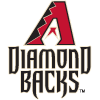 Daulton Varsho, C, Diamondbacks: Exactly how much value Varsho would have this season was up for debate. On the one hand, he was seemingly set for an everyday role in the outfield, giving him a far greater workload than most catchers and giving him a shot to provide plenty of counting stats. On the other, he wasn't a particularly exciting hitter last season, posting a 98 wRC+, so there were some doubts as to whether he'd keep that role. Through his first 42 games, Varsho's supporters were clearly winning, as he'd homered eight times while slashing .268/.337/.490, good for a 128 wRC+. Things haven't been as pretty over his last 25 contests, however, as he's homered just twice while hitting .191/.245/.298, good for just a 51 wRC+. The primary issue has been his quality of his contact, as his barrel rate dipped from 11.6 percent over the former stretch to 5.6 percent over the latter. So far, that's yet to affect his playing time, as he's started 15 of Arizona's last 16 games, but a continued slump would put his spot as the plate-appearance leader among catchers at real risk.
Daulton Varsho, C, Diamondbacks: Exactly how much value Varsho would have this season was up for debate. On the one hand, he was seemingly set for an everyday role in the outfield, giving him a far greater workload than most catchers and giving him a shot to provide plenty of counting stats. On the other, he wasn't a particularly exciting hitter last season, posting a 98 wRC+, so there were some doubts as to whether he'd keep that role. Through his first 42 games, Varsho's supporters were clearly winning, as he'd homered eight times while slashing .268/.337/.490, good for a 128 wRC+. Things haven't been as pretty over his last 25 contests, however, as he's homered just twice while hitting .191/.245/.298, good for just a 51 wRC+. The primary issue has been his quality of his contact, as his barrel rate dipped from 11.6 percent over the former stretch to 5.6 percent over the latter. So far, that's yet to affect his playing time, as he's started 15 of Arizona's last 16 games, but a continued slump would put his spot as the plate-appearance leader among catchers at real risk.
 Yusei Kikuchi, SP, Blue Jays: Few pitchers have been more frustrating from a fantasy perspective over the last few years than Kikuchi. There's always looked like there's been something there, as he managed above-average strikeout and ground-ball rates over the last two seasons, but that's yet to translate into an ERA better than his 4.41 mark from last season despite ERA estimators that suggest he deserved a mark much lower. This year, he's pushed his strikeout rate to a career-best 25.5 percent, but it hasn't had the desired effect, as his ERA sits at 5.08. Part of that is due to his 13.5 percent walk rate, the highest mark among pitchers who've thrown at least 50 innings. Much of it is due to his 2.1 HR/9, a mark that comes with his career-low 42.5 percent ground-ball rate. Nine of the 13 homers he's allowed this season have come in his five June starts, a stretch in which he owns a 9.39 ERA and has failed to complete five innings in any appearance. A contender like Toronto may not be able to stomach this kind of performance for much longer.
Yusei Kikuchi, SP, Blue Jays: Few pitchers have been more frustrating from a fantasy perspective over the last few years than Kikuchi. There's always looked like there's been something there, as he managed above-average strikeout and ground-ball rates over the last two seasons, but that's yet to translate into an ERA better than his 4.41 mark from last season despite ERA estimators that suggest he deserved a mark much lower. This year, he's pushed his strikeout rate to a career-best 25.5 percent, but it hasn't had the desired effect, as his ERA sits at 5.08. Part of that is due to his 13.5 percent walk rate, the highest mark among pitchers who've thrown at least 50 innings. Much of it is due to his 2.1 HR/9, a mark that comes with his career-low 42.5 percent ground-ball rate. Nine of the 13 homers he's allowed this season have come in his five June starts, a stretch in which he owns a 9.39 ERA and has failed to complete five innings in any appearance. A contender like Toronto may not be able to stomach this kind of performance for much longer.
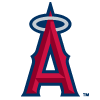 Reid Detmers, SP, Angels: Detmers entered the year with a fair amount of hype and looked to be making good on his promise when he threw a no-hitter May 10 against the Rays. Since then, things haven't gone at all well for him. In six starts, he's struggled to a 5.67 ERA and an even worse 6.87 FIP. He allowed eight homers, thanks in large part to his ground-ball rate collapsing to 28.2 percent. When combined with a low 20.3 percent strikeout rate and a high 11.0 percent walk rate, it's no surprise that the results weren't anything close to good, and they could have been far worse if not for a .239 BABIP. The Angels decided they'd seen enough, demoting him to Triple-A Salt Lake on Wednesday. It's far too early to write him off given that he's just 22 years old and has only made 31 career professional starts, but there's little sense holding onto him in single-season formats. His career 5.38 ERA and 18.6 percent strikeout rate aren't worth waiting around for.
Reid Detmers, SP, Angels: Detmers entered the year with a fair amount of hype and looked to be making good on his promise when he threw a no-hitter May 10 against the Rays. Since then, things haven't gone at all well for him. In six starts, he's struggled to a 5.67 ERA and an even worse 6.87 FIP. He allowed eight homers, thanks in large part to his ground-ball rate collapsing to 28.2 percent. When combined with a low 20.3 percent strikeout rate and a high 11.0 percent walk rate, it's no surprise that the results weren't anything close to good, and they could have been far worse if not for a .239 BABIP. The Angels decided they'd seen enough, demoting him to Triple-A Salt Lake on Wednesday. It's far too early to write him off given that he's just 22 years old and has only made 31 career professional starts, but there's little sense holding onto him in single-season formats. His career 5.38 ERA and 18.6 percent strikeout rate aren't worth waiting around for.
 Brandon Marsh, OF, Angels: Marsh hasn't hinted at blossoming into a star at any point this season, but his .276/.329/.393 line (good for a 106 wRC+) through the end of May did represent a fair amount of growth. His 30.9 percent strikeout rate over that stretch was still worryingly high, but it at least represented an improvement on his 35.0 percent mark as a rookie last year. All that progress has been lost in June, however, as his strikeout rate has spiked to 42.5 percent as his slash line dipped to .135/.190/.243. Marsh does have a strong defensive reputation, and his 8.6 percent barrel rate sits respectably in the 58th percentile, but there are limits to how often a hitter can strike out while remaining a big-league regular. If there's optimism here for Marsh, it rests on the fact that his 24.4 percent strikeout rate across his minor-league career wasn't notably poor and that scouting reports from his time as a prospect don't highlight major contact concerns, but he's going to have to turn things around soon to have much fantasy viability this season.
Brandon Marsh, OF, Angels: Marsh hasn't hinted at blossoming into a star at any point this season, but his .276/.329/.393 line (good for a 106 wRC+) through the end of May did represent a fair amount of growth. His 30.9 percent strikeout rate over that stretch was still worryingly high, but it at least represented an improvement on his 35.0 percent mark as a rookie last year. All that progress has been lost in June, however, as his strikeout rate has spiked to 42.5 percent as his slash line dipped to .135/.190/.243. Marsh does have a strong defensive reputation, and his 8.6 percent barrel rate sits respectably in the 58th percentile, but there are limits to how often a hitter can strike out while remaining a big-league regular. If there's optimism here for Marsh, it rests on the fact that his 24.4 percent strikeout rate across his minor-league career wasn't notably poor and that scouting reports from his time as a prospect don't highlight major contact concerns, but he's going to have to turn things around soon to have much fantasy viability this season.









